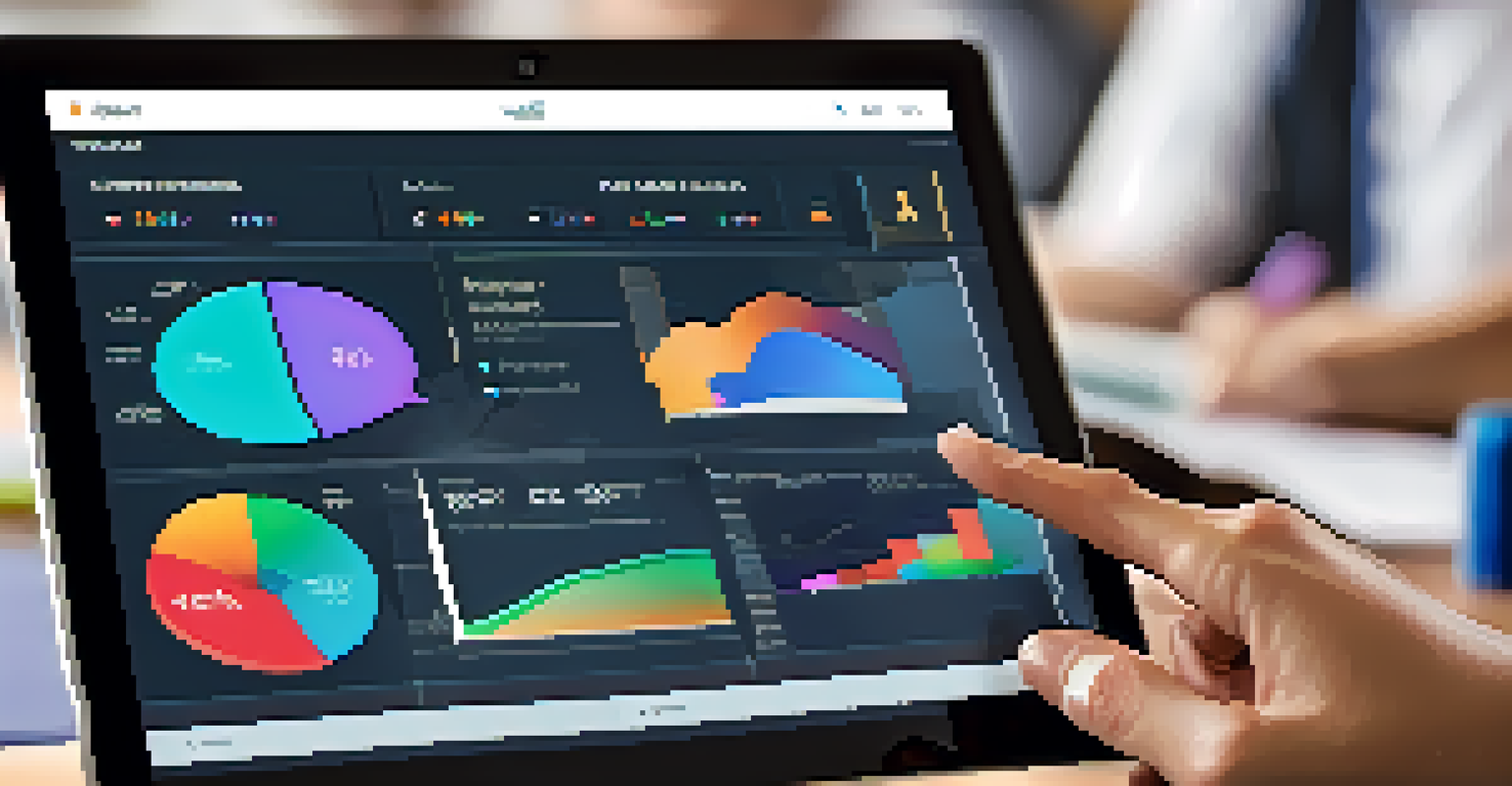Data Literacy: Essential Skills for Learning Analytics

Understanding Data Literacy: Why It Matters
Data literacy is the ability to read, understand, create, and communicate data effectively. In today's data-driven world, this skill is becoming increasingly important, especially in fields like education. By developing data literacy, educators can make informed decisions that enhance student learning outcomes.
Without data, you're just another person with an opinion.
Imagine trying to navigate a new city without a map. That's what it feels like for educators who lack data literacy—they're often unsure which direction to take. With a solid grasp of data concepts, they can interpret student performance metrics and adjust their teaching strategies accordingly.
Ultimately, data literacy empowers educators to engage with data confidently. This not only improves their professional skills but also fosters a culture of continuous improvement within learning environments.
Key Components of Data Literacy Skills
Data literacy encompasses several key skills, including data interpretation, data visualization, and statistical analysis. Each of these components plays a vital role in understanding and using data effectively. For instance, being able to interpret data means you can spot trends and patterns that inform your teaching.

Data visualization, on the other hand, involves presenting data in a visually appealing way, making it easier to digest. Think of a pie chart compared to a long list of numbers; the chart quickly communicates information, allowing educators to make quicker decisions.
Data Literacy Empowers Educators
By developing data literacy, educators can make informed decisions that enhance student learning outcomes.
Finally, statistical analysis helps educators evaluate data rigorously. By understanding statistics, they can determine if a change in teaching methods is truly making a difference or if it’s just a coincidence, leading to more evidence-based practices.
Building a Data-Informed Culture in Education
Creating a data-informed culture in educational settings starts with leadership. School administrators can lead by example, encouraging staff to embrace data-driven practices. This fosters an environment where teachers feel comfortable using data to inform their instructional methods.
Data is the new oil. It’s valuable, but if unrefined, it cannot really be used.
Collaboration is another vital element. When educators work together to analyze data, they can share insights and strategies that benefit the entire team. Picture a group of chefs experimenting with ingredients together; they learn from each other, leading to a richer final dish.
Professional development opportunities focused on data literacy are crucial as well. Training can equip educators with the tools and knowledge they need, ensuring that data becomes a natural part of their teaching repertoire.
Tools and Resources for Enhancing Data Literacy
There are numerous tools and resources available to support educators in building data literacy skills. Software programs like Tableau or Google Data Studio enable users to visualize data easily, making it more accessible. These tools can transform complex datasets into understandable visuals that tell a story.
Online courses and webinars also provide valuable training. Platforms like Coursera or EdX offer courses specifically focused on data analysis and interpretation, catering to different skill levels. These resources allow educators to learn at their own pace, fitting into their busy schedules.
Key Skills for Data Literacy
Data literacy includes vital skills like data interpretation, visualization, and statistical analysis that improve teaching practices.
Additionally, professional learning communities (PLCs) provide a space for educators to discuss their experiences with data. Sharing successes and challenges can lead to collective growth and a deeper understanding of data literacy in practice.
Challenges in Achieving Data Literacy
Despite the benefits, achieving data literacy is not without its challenges. Many educators feel overwhelmed by the sheer volume of data available or unsure of how to interpret it effectively. This can lead to frustration and reluctance to engage with data.
Time constraints are another barrier. With many responsibilities, educators often find it difficult to dedicate time to learn new skills. Imagine trying to carve out time for a new hobby while juggling work and family commitments—it’s a tough balancing act.
Moreover, there can be a lack of support in some institutions. Without proper training and resources, educators may struggle to develop the necessary skills. It's essential for schools to prioritize data literacy and provide the necessary backing to help teachers succeed.
Real-World Examples of Data Literacy in Action
Many schools have successfully implemented data literacy initiatives that showcase its impact. For example, a district in California used data analysis to identify achievement gaps among students. By focusing on specific groups, they tailored interventions that significantly improved performance.
Another inspiring case is a university that introduced a data dashboard for faculty. This tool provided real-time insights into student engagement and performance, allowing instructors to adjust their teaching strategies promptly. It’s like having a fitness tracker for education—keeping everyone accountable and informed.
Building a Data-Informed Culture
Creating a culture of data use in schools requires leadership, collaboration, and professional development to support educators.
These examples highlight how data literacy translates into actionable insights that enhance student learning. When educators effectively use data, they can make informed decisions that lead to positive outcomes for their students.
Future Trends in Data Literacy for Education
As we move forward, data literacy in education is expected to evolve. With advancements in technology, tools for data analysis will become even more user-friendly and accessible. This democratization of data means that educators at all levels can engage with and benefit from data literacy.
Artificial Intelligence (AI) is also playing a role in shaping the future of data literacy. AI-driven analytics can provide personalized insights for educators, helping them cater to individual student needs more effectively. It’s like having a personal coach guiding them through the data landscape.

Moreover, the emphasis on data-driven decision-making will likely grow. Schools will increasingly rely on data to guide curriculum development, resource allocation, and instructional strategies, reinforcing the importance of data literacy as a fundamental skill in education.